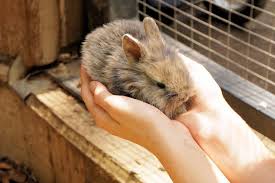Introduction to Rabbit Mating Behavior
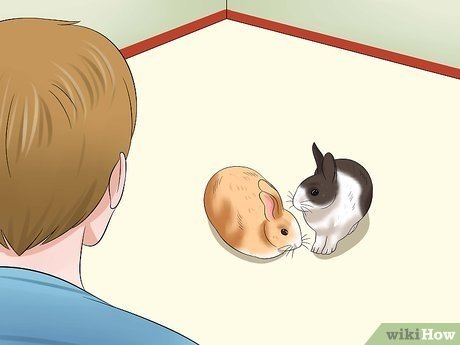
Have you ever wondered about the romantic lives of those cute, soft animals that leap around your yard? Do you question whether rabbits are committed partners or fool around like some furry Don Juans? This article will let us delve into the captivating universe of rabbit courtship and reveal 7 interesting facts about their love affairs!
The Myth of Rabbits Mating for Life
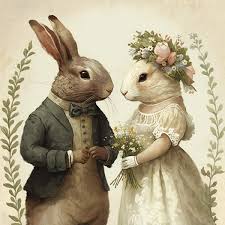
Speaking about rabbits, there is a general belief that they mate for life. But this myth is not grounded in facts. Some types of rabbits have been reported to be monogamous; however, other species are not committed to such relationships.
In truth, most feral rabbits are concerned with breeding and survival rather than maintaining long-term bonds. Breeding season, abundance of mates, and environmental factors affect their mating patterns.
Even though a few rabbits may make good pair bonds during the breeding season, it is important to note that such links are usually ephemeral. Rabbits are famous for their promiscuity as they mate several times with different partners.
Thus, the concept that rabbits would stay loyal to one another for all their lifetime is somewhat flawed. Their natural environment affects complex mating patterns.
Breeding Season and Mating Rituals
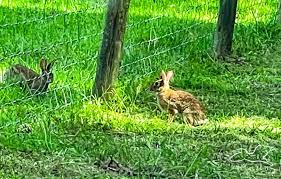
In turn, this is the time of year when rabbits start breeding. Thus, there is a kind of awakening in nature with new births and endless possibilities. During this season, male rabbits, commonly called bucks, become more territorial and display aggression towards other males to establish supremacy and attract females.
Females in rabbits are receptive to mating only during specific stages of their reproductive cycle. They release pheromones, signifying that they are ready for copulation, hence making bucks chase them around or go around them. These intricate rituals serve an ultimate purpose which is successful reproduction among the rabbit communities.
During their courtship rite, the male will jump and perform somersaults midair—an enchanting show put out for his lover. Once a couple has formed a bond through these rituals and effectively mated, they may continue to be together temporarily or long-term depending on various elements impacting on their association dynamics.
Unique Characteristics of Rabbit Courtship
Rabbit courtship, however, has some unique characteristics that differentiate these soft pets. One of the most interesting things about them is their complex grooming rituals. For example, rabbits often groom one another to indicate affection and bond with each other, thus creating trust and intimacy.
Another behaviour called “binkying” involves jumping and twisting in mid-air for joy. This playful display can be observed during mating, showing excitement and happiness between potential mates.
Rabbits also have different body language cues to communicate during courtship, like nuzzling, nudging, or even circling each other. Through these little gestures, they bond with their partner and establish rapport.
The unique characteristics of the rabbit courtship are evidence of their social complexities and emotional depth as portrayed by these cute animals’ relationships.
Promiscuity in Rabbits: Do They Cheat on Their Partners?
Concerning the rabbits’ relationships, they are not always as monogamous as one would think.
Far from the popular idea that rabbits mate for life, sexual immorality is also a part of them.
In the wild, male rabbits may have multiple partners during mating season to increase their chances of passing on their genes. It is an instinctive survival mechanism rather than emotional bonding.
Female rabbits, however, are known to be discriminating when choosing a mate. They often test potential mates before allowing them to copulate to ensure good genetic compatibility.
However, some pairs can form strong bonds and exhibit occasional monogamy; this does not prevent infidelity in rabbit relationships. Factors such as competition for resources or hormonal changes may make one partner look for other mates.
Promiscuity in rabbits serves a role in evolution by promoting genetic diversity in a population, hence increasing reproductive success. It is an intriguing aspect of rabbit behaviour that adds complexity to our understanding of social dynamics among these adorable animals.
The Role of Monogamy in Rabbit Social Structures
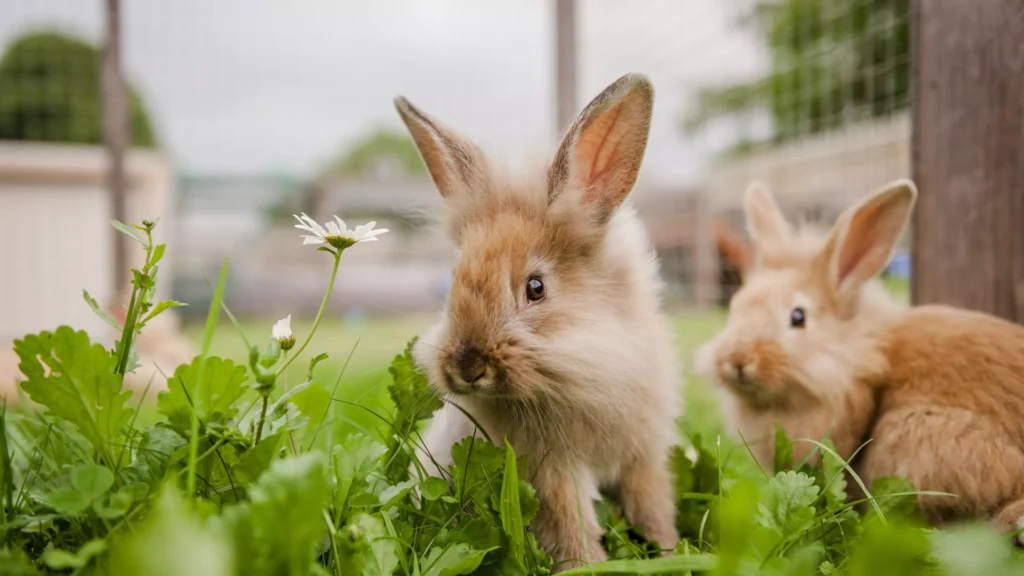
Rabbit relationships are not usually as monogamous as they appear. While it is a common belief that rabbits mate for life, their nature can also be promiscuous.
Have you ever thought about the complexities of rabbit society? Rabbits’ interactions are largely shaped by monogamy. For instance, rabbits may form pairs that are monogamous and showcase signs of long-lasting commitments.
There is a strong bond between male and female rabbits in such couples. This can include sharing duties such as raising young ones together and defending their territory jointly. Such collaboration fosters family cohesion and survival.
An interesting fact is that not all rabbits practice monogamous relations. Some rabbits may be seen mating with different partners during the breeding season. This makes the understanding of social dynamics among rabbits more complicated.
It is through knowing how monogamy works in rabbit societies that we come to comprehend diverse methods by which creatures relate within their communities.
Factors That Can Affect the Pair Bond in Rabbits
Stress due to factors like strain, sickness, or changes in surroundings can affect the partners’ association among rabbits. Loud noise stresses, predators near them, and even a new pet at home could bring in some tension between the two partners. The bond between the two can also be disrupted by an illness; a sick rabbit may become less attentive to its mate or have her/his behavior change, which alters their relationship.
Rabbits may experience changes such as moving into a new house or adding new friends to their cages that make them feel unsure and unsecured, leading to fights amongst rabbit pairs. Moreover, rabbits tend to feel threatened when they have inadequate space or hiding places hence causing a lack of trust with each other.
For this reason, bunny owners need to closely monitor their pets’ behavior, addressing any possible stressors instantly to maintain a firm pair bond within these social animals.
What Happens When One Partner Dies?
Rabbits can feel heartbroken when they lose their partners. A surviving rabbit shows sorrow by losing its appetite and becoming more lethargic after its partner’s death. Rabbits are sociable animals that make strong connections with their mates; hence, the absence of a mate may be felt deeply.
In some cases, the remaining pet may grieve; it can be seen in their sadness and seclusion. It’s important to offer them extra comfort and attention during this time to help them handle grief. Similarly, introducing new friends slowly and carefully will ease loneliness.
Every bunny behaves differently about the loss of its partner; thus, closely monitoring such behavior is crucial to providing needed support. Given time and patience, most rabbits can adapt themselves to life without their partners, although they forever hold dearly onto memories of that bond.
FAQs:
Q: Do rabbits mate for life, according to popular belief?
A: No, contrary to popular belief, rabbits do not mate for life. Their mating habits are influenced by breeding seasons and environmental factors.
Q: How do environmental factors impact rabbit mating behaviors?
A: Environmental factors such as the availability of mates and resources significantly influence whether rabbits form long-term bonds or mate temporarily. Do rabbits mate for life?
Q: Is monogamy common among rabbits?
A: No, monogamy is not common among rabbits. While some may form brief pair bonds during breeding seasons, they are generally not committed to long-term relationships.
Q: What are some unique courtship behaviors rabbits display?
A: Rabbits exhibit unique courtship behaviors like grooming each other and performing joyful leaps known as “binkying” during mating displays. Do rabbits mate for life?
Q: How does promiscuity play a role in rabbit mating strategies?
A: Promiscuity is a survival strategy for rabbits to increase genetic diversity. They may mate with multiple partners during breeding seasons to ensure reproductive success. Do rabbits mate for life?
Q: How does stress affect rabbit pair bonds?
A: Stress, such as changes in environment or illness, can disrupt rabbit pair bonds, leading to tension or even fights between partners. Do rabbits mate for life?
Q: What happens when one rabbit partner dies?
A: The surviving rabbit may experience grief, showing signs like loss of appetite and lethargy. Providing comfort and possibly introducing new companions can help them cope. Do rabbits mate for life?
Q: Are there exceptions to rabbits’ promiscuous behavior?
A: While rabbits generally mate with multiple partners, some individuals may form stronger bonds and exhibit occasional monogamy, though this is not typical behavior. Do rabbits mate for life?
Q: How do female rabbits select their mates?
A: Female rabbits are selective in choosing mates, often testing potential partners for genetic compatibility before allowing copulation. Do rabbits mate for life?
Q: What role does monogamy play in rabbit social structures?
A: Monogamy can involve pairs collaborating in raising young and defending territory, but such behaviors vary widely among rabbit populations. Do rabbits mate for life?
Tips for Successfully Pairing
Misconception about rabbits mating for life, a concept that may be misleading when it comes to understanding rabbit mating behavior. Pair bonds during the breeding season may be strong but they do not necessarily translate into a lifelong relationship.
Unique courtship rituals and breeding seasons affect how rabbits behave towards one another. Rabbits are promiscuous but can show monogamousness in social structure.
Age, compatibility, and environment are examples of factors that influence rabbit pair bonding strength. In this case, the surviving rabbit may grieve upon its partner’s death but eventually adapt to living singly.
Factors like introducing them slowly, providing plenty of personal space for both individuals, and closely monitoring their interaction should always be considered when attempting to combine rabbits successfully. You can create harmonious relationships among your ‘hairy’ friends if you have patience and take proper care of them.
Appreciating these fascinating creatures even more requires one to understand the complexities of rabbit mating behaviors. They might not mate for life as we know it traditionally, but their intricate sociability patterns still fascinate scientists and pet owners alike.

